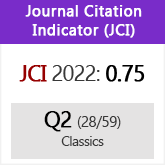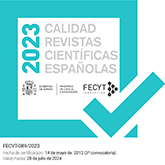El formante -n y el origen de la flexión heteroclítica del indoeuropeo
DOI:
https://doi.org/10.3989/emerita.1991.v59.i1.521Abstract
The author, based on the recent bibliography and on the existence of the heteroclisis of the type -pl-n on Etruscan (which he understands as an Indoeuropean language), gives new proposals on this subject. He thinks that the three types of heteroclisis are old: -pl-n, -rl -n, -rl -p. Within them -n is not a connecter. They are traces of an attempt of creating a nominal flexion opposing two themes and with a wider value than the cases. These cases are a new formalization of the flexion, where the desinences are added whether to the theme itself or to the different themes of the heteroclite flexion.
Downloads
Download data is not yet available.
Downloads
Published
1991-06-30
How to Cite
Adrados, F. R. (1991). El formante -n y el origen de la flexión heteroclítica del indoeuropeo. Emerita, 59(1), 5–21. https://doi.org/10.3989/emerita.1991.v59.i1.521
Issue
Section
Articles
License
Copyright (c) 1991 Consejo Superior de Investigaciones Científicas (CSIC)

This work is licensed under a Creative Commons Attribution 4.0 International License.
© CSIC. Manuscripts published in both the printed and online versions of this Journal are the property of Consejo Superior de Investigaciones Científicas, and quoting this source is a requirement for any partial or full reproduction.All contents of this electronic edition, except where otherwise noted, are distributed under a “Creative Commons Attribution 4.0 International” (CC BY 4.0) License. You may read here the basic information and the legal text of the license. The indication of the CC BY 4.0 License must be expressly stated in this way when necessary.
Self-archiving in repositories, personal webpages or similar, of any version other than the published by the Editor, is not allowed.














